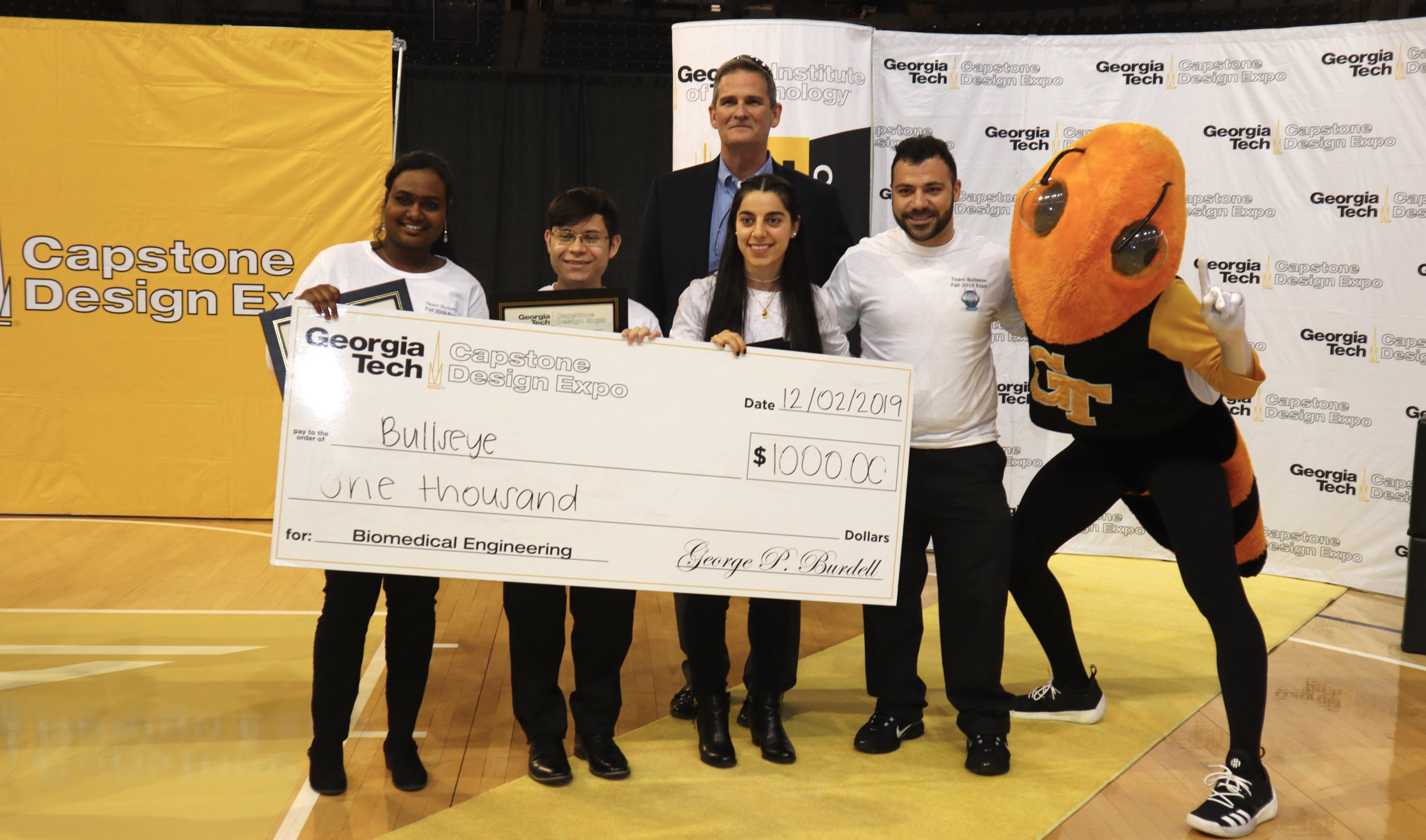Georgia Tech biomedical engineering students Oscar Gutierrez, Ahmed Alnamos, Nishani Kanthasamy and Sondos Alnamos make up the team ‘Bullseye’ for the Fall 2019 edition of the Capstone Program.
Their device seeks to provide a solution for patients who are at risk of aspiration but do not otherwise require general anesthesia during Esophagogastroduodenoscopy, or EGD, procedures. Their device achieves this by creating a tight seal against the esophageal wall, reducing aspiration by preventing the backflow of stomach contents further up into the esophagus and eventually into the trachea.
“There are more than 50 million of these procedures happening annually in the United States and aspiration, although the risk is less than 1%, is devastating for the lungs when it does occur because they are not meant to withstand the acidity of the gastric contents,” explained Ahmed. “When that volume reaches the lungs, it can cause aspiration pneumonia and possibly death.”
Despite being such a frequent procedure, there are no devices on the market that are meant to specifically reduce aspiration during EGD.
“Currently, if patients have a high risk of aspiration, they are taken to the OR, given general anesthesia, intubated and [placed on] mechanical ventilation,” said Oscar. “Our device would eliminate almost all of these steps and the need for general anesthesia.”
Putting their device to the test in a real OR
GCMI recently gave the Biomedical Engineering Capstone teams the chance to evaluate their medical device prototypes in a real OR by providing access to a cadaver, our facilities, equipment and staff expertise.
“This was my first time working with a cadaver,” admitted Ahmed. “I was very nervous going in but I thought, ‘This is my only chance to test this!’ and just went for it!”
All of the team members expressed their gratitude for the experience and the opportunity to see what worked and what didn’t. The device they tested was their twelfth SolidWorks prototype and they made it clear that there were more iterations to come following their test day at GCMI.
“Our device is intended to be for one-time use,” Nishani said. “We’re excited to take what we’ve learned today and perfect our current prototype in the time that we still have left before the Expo.”
There was a resounding ‘Yes’ from everyone in the group when asked whether they had plans to pursue their device any further after the program ends.
They have new encouragement to do so. Bullseye earned the award for best Biomedical Engineering project at the Capstone Design Expo on December 2.
“We are applying for a patent and we have discussed possibly applying for the Inventure Prize,” Sondos said. “We might want to form a company at some point since nothing like this exists in the market at the moment and we would own that area with our sponsor, Dr. Anand Sagar Jain.”
